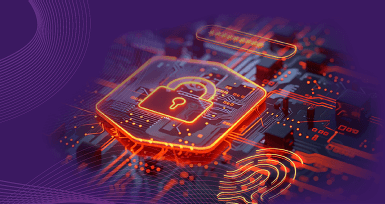Tips to Navigate the 5 Key Security Shifts of 2025

Ritika Jain
Jan 23, 2025


Mega breaches are increasing in number, scale, and cost! By 2025, the global cost of cybercrime is projected to reach $10.5 trillion, growing at 15 percent annually. To counter rising risks in today’s complex threat environment, companies are investing in building a robust cybersecurity posture. However, many security initiatives require a lot of time, money, and resources to implement and maintain.
This is because security budgets are tight. According to a recent report, only about 11% of a company’s IT budget is dedicated to security despite increased risk. Leaders say that in an ideal world, that should be closer to 17%.
The shift in both physical and digital environments demands a proactive approach and a hands-on role in monitoring and responding to emerging risks. As the 2025 budget allocation begins, consider security and compliance automation, as it has proven to be a practical solution to cut costs and streamline operations. Automating key security and compliance tasks can save time and allow business leaders to focus on higher-value priorities.
Here are the key tasks leading businesses are aiming to automate in 2025.
1. Threat Detection Advancements
AI-powered threat detection is revolutionizing security. AI can swiftly identify potential threats by analyzing vast data streams in real-time, enabling proactive responses and minimizing risk.
This empowers security teams to:
- Proactively address vulnerabilities: Identify and mitigate risks before they escalate.
- Improve efficiency: Streamline operations, reduce manual effort, and cut costs.
- Enhance situational awareness: Gain 360-degree visibility across physical and cyber infrastructures, eliminating blind spots.
Automation helps speed up incident response times by reducing manual efforts. It also allows for swift containment and minimal downtime. Ongoing assessments help identify vulnerabilities and address potential gaps as they occur—and, most essentially, before they can be exploited.
In 2025, Cyber resilience will be the key component – prevention along with recovery. Effective data recovery plans are necessary for bouncing back after an attack, and automation will help prioritize backup and disaster recovery.
2. Third-party Risk Management
Did you know 98% of organizations have at least one third-party vendor that has suffered a data breach? Furthermore, third-party attacks have led to 29% of breaches. On average, organizations use more than 100 SaaS applications. The exploitation of trusted third parties is expected to be a prevalent security concern in 2025.
Third-party risk management should be the New Year’s resolution for a resilient, sustainable, and ethical business ecosystem. Just one vendor misstep, oversight, or incident can jeopardize compliance, tarnish an organization’s reputation, and negatively impact performance.
Now more than ever, organizations need the right tools to ensure they’re properly managing, monitoring, and training their third-party resources. Automation can help in many ways:
- Identify Shadow IT: Automated vendor discovery helps proactively identify and address the risks associated with unsanctioned software usage.
- Prioritize Risk Mitigation: Automated risk assessments enable teams to focus on the most critical vulnerabilities and prioritize remediation efforts.
- Streamline Remediation: Automation facilitates faster implementation of security controls and mitigates risks more effectively.
- Improve Efficiency: Automated data extraction from various sources, such as SOC 2 reports, DPAs, and questionnaires, significantly reduces the time spent on manual reviews.
By embracing automation, organizations can enhance their vendor risk management programs, improve efficiency, and strengthen their overall security posture.
3. Security Questionnaire Automation
As organizations become more security-conscious, the scrutiny of vendors has intensified. Due diligence now routinely includes thorough security reviews, making security questionnaires a standard part of the deal-making process.
While buyers recognize the importance of security questionnaires to assess vendor risk, these questionnaires pose a significant burden on sellers. Large organizations, in particular, face a deluge of repetitive and time-consuming questionnaires, often requiring manual responses across various formats. This places a heavy strain on already stretched security teams.
Automating security questionnaires is one way to lighten the load and accelerate the overall time it takes to complete a security review. Here are a few ways businesses can automate the security questionnaire process with Letsbloom for a more efficient workflow.
- Centralize the knowledge base of security information.
- Automated evidence gathering and auto-fill questionnaire answers using available information.
- Submit questionnaires in a variety of formats with greater efficiency.
- Collect and track NDA signature status more efficiently with less human intervention.
- Quickly consolidate review and internal approval processes to reduce manual project management.
4. Compliance Task Automation
Compliance is not merely a regulatory requirement; it's a critical sales enabler, particularly for enterprise deals. Demonstrating compliance builds trust and confidence with customers, facilitating business growth.
However, achieving and maintaining compliance is a complex and resource-intensive process. Audits can be time-consuming, and the need to comply with various standards across different regions adds to the challenge. A recent report indicates that global businesses dedicate an average of 11 weeks annually to compliance tasks —and 1 in 10 organizations spend over 25 weeks a year on compliance.
Automating Compliance for Efficiency
Fortunately, compliance automation can significantly streamline compliance efforts. By automating evidence collection and continuous control monitoring, organizations can potentially save up to five weeks per year. This not only reduces costs and resource strain but also strengthens overall security posture.
5. Security posture management
Historically, compliance assessments have typically involved annual reviews to identify and address risks. However, the dynamic nature of the cybersecurity landscape necessitates a more proactive approach.
Continuous compliance monitoring is gaining traction in 2025. This approach provides organizations with an ongoing, real-time view of their security posture, enabling them to adapt to evolving threats and maintain a strong compliance stance.
As we look toward 2025, cybersecurity is no longer optional but a core business requirement. To stay ahead of the game, organizations must follow a holistic cybersecurity strategy that incorporates: Advanced technologies like AI and machine learning for threat detection and response.
Kick-start your automation journey this year with Letsbloom
Automation is not just about technology; it’s a mindset. It’s about delivering better results by doing more with less. No matter where you stand in your journey, the time to act is now.
With shrinking budgets and limited resources, automating manual tasks is the only way to ensure focus on high-value initiatives and maintain a strong security posture. Letsbloom can help organizations of all sizes automate processes across their security program with:
- Compliance automation and policy management
- Security questionnaire automation
- Vendor onboarding and risk management
- Faster audit-readiness
Get in touch with our experts today if automation is in your plan this year!










